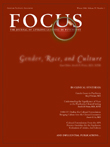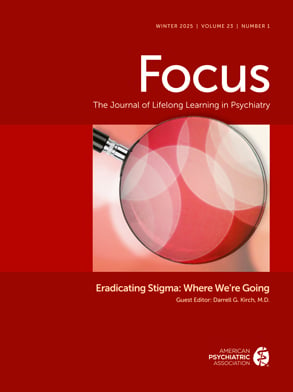Specific criteria
A limitation of this study consists of the possibility that the publications reviewed may have used heterogeneous criteria for neuropathological diagnosis. There may also have been differing definitions of both dementia and parkinsonism in the clinical diagnoses across studies. Nevertheless, this analysis of clinicopathological studies of DLB yielded a number of findings about specific components of the Consensus Guidelines Diagnostic Criteria. We will review these results as they apply to individual symptoms.
Parkinsonism. We found a high incidence of extrapyramidal signs in the entire sample, and in both Groups N and O. Many reports cited the number of DLB cases with tremor, rigidity, hypokinesia, and so forth, at the onset of dementia and did not comment on the development of such motor dysfunction later in the course of the disorder. These results, therefore, may underestimate the total incidence of parkinsonism in DLB patients. The studies demonstrate parkinsonism in at least two-thirds of patients with DLB. However, the reports do not clearly distinguish between patients who developed parkinsonism before or after the use of antipsychotic medications.
The data support the co-occurrence of extrapyramidal and cognitive dysfunction. The appearance of these disturbances within 12 months of each other may serve as a reliable diagnostic indicator. This conclusion must be verified in groups of patients in whom medication status is well characterized.
The higher incidence of co-occurrence in Group N may reflect the greater use of antipsychotic medications in a sample that was more consistently drawn from psychogeriatric units; that is, more likely to have had severe behavioral problems.
Visual hallucinations (VHs). Only a minority of DLB patients have VHs. Hence, the usefulness of this criterion is somewhat limited. This is particularly true if one considers the fact that many of the VHs may be related to medications and may not be an inherent disturbance. The incidence of VHs in individuals treated with antiparkinsonian drugs is quite high, especially if there is concurrent cognitive decline (
33). Since the hallucinators are frequently receiving these medications, they clearly have had parkinsonian signs, often combined with dementia. The emergence of VHs in these patients could be seen, then, as an epiphenomenon, one that is not inherent to the disease per se. This was suggested in the original paper outlining the Consensus Guidelines. McKeith et al. (
3) noted that “the role of antiparkinsonian medication in precipitating and perpetuating the confusional and hallucinatory symptoms typical of DLB has not been systemically investigated.” The most cogent data on this question appear in a study conducted by Klatka et al. (
15), in which 7 of 28 DLB patients had taken antiparkinsonian agents. All seven patients on drugs hallucinated, but fewer than half of the other patients did. DeVos et al. (
16) noted that all nine DLB patients with VHs in their study were on dopaminergic drugs. Likewise, in the study by Hely et al. (
17), five of seven hallucinators were receiving dopaminergic medications. Unfortunately, only a very few studies noted their subjects’ drug regimens.
It is also possible that DLB predisposes patients to the onset of drug-induced VHs via dopaminergic dysfunction. Visual pathways may be adversely affected by dopamine deficiencies in Parkinson’s disease (
34). A recent study found that hypometabolism in the primary visual cortex is associated with VHs in presumed DLB patients (
35). Further studies should explore such neurochemical and neuroanatomical differences in autopsy-confirmed DLB, AD, and Parkinson’s disease with dementia, with and without VHs. Such studies must control for medication status.
Cognitive fluctuations. This is the least useful criterion in the Consensus Guidelines for a number of reasons. The incidence of this pattern of disturbance is 10 times higher in the Group N patients than in Group O, in which it is almost non-existent (8%). This inconsistency may be explained by overly vague definitions of cognitive fluctuations and/or by referral biases.
Some definitions of cognitive fluctuations emphasize a picture consistent with episodes of delirium; that is, changes in level of consciousness (
2), but other authors suggest rapid variations in higher cortical functions, for example, memory (
36). Such inconsistencies would explain some of the variance in results. Studies that found a preponderance of hallucinations and fluctuations were often based on patient samples drawn from psychogeriatric units. These results may reflect a particularly severe end of the spectrum of symptoms in DLB.
Consensus guidelines
The Consensus Guidelines have rapidly become a diagnostic gold standard. It appears, however, that some of the major criteria may have been included in recognition of early studies on groups that had more severe behavioral disturbances and were not representative of the larger population of DLB cases. In fact, 78% of the N Group subjects were drawn from psychogeriatric inpatient units. Although the corresponding figure for Group O subjects is unknown, it is clear that the sources of recruitment were much more heterogeneous. Reliance on the inclusion of subjects whose symptoms required psychiatric hospitalization may have led to an excess number of reported psychiatric symptoms compared with a more general population of DLB patients. This approach may have skewed the sample by considering only the most psychiatrically impaired people as representative of all cases of DLB. This is similar to an overestimation by Mindham (
37) of the prevalence of depression in Parkinson’s disease by the assessment of mood in psychiatric inpatients exclusively rather than a more diverse sample.
It is also possible that most VHs and fluctuations in cognition occur secondary to pharmacologic agents and are, therefore, not primary symptoms. To consider these as core features may be as erroneous as including extrapyramidal reactions as a diagnostic criterion in schizophrenia merely because a number of schizophrenic patients manifest such reactions.
In fact, a very recent report from the second international workshop on DLB noted that the Consensus Criteria may be of limited value in screening for DLB cases. The paper also cites the low interrater reliability for the assessment of cognitive fluctuations (
11). To clarify this issue, further work should explore whether VHs reflect an innate pathology in DLB, for example, altered dopaminergic function in visual pathways.
Greater caution should be used in the establishment of a set of diagnostic criteria for DLB. The presence of parkinsonism and, perhaps, its co-occurrence with dementia, appear to be the most reliable indicators of the presence of DLB. To confirm this impression and to explore the validity of other potential criteria, further large-scale prospective studies will be essential. Particular emphasis on the use of dopaminergic, antipsychotic, and other medications in all cases would be vital.

